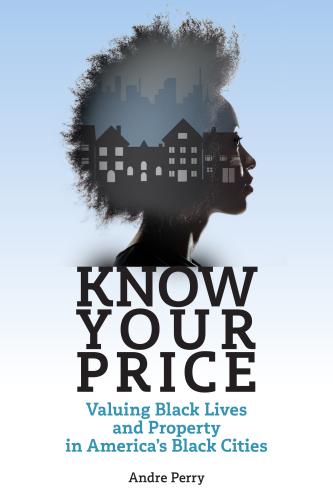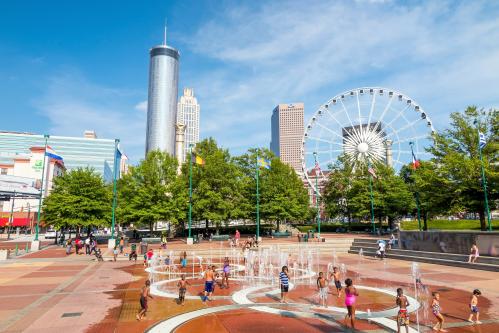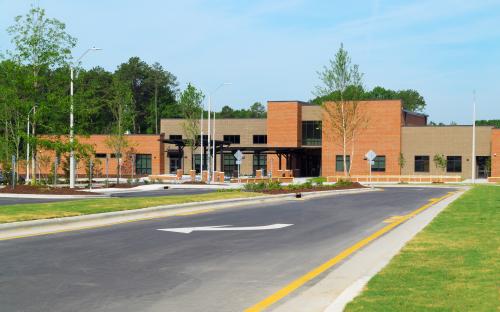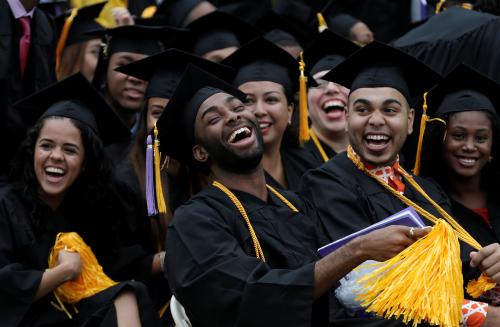The unemployment rate is 15.8% in Newark, N.J. It’s an alarming 17.4% in Detroit. And in Flint, Mich. more than a quarter of the population is unemployed. If these numbers referred to the white unemployment rate, our leaders would be doing everything possible to improve it. But these rates represent black unemployment, and no one is sounding the alarm.
The Bureau of Labor Statistics released their May jobs report on June 7. Media attention focused on job figures, which fell below economists’ predictions. Although the economy generated fewer jobs than expected, analysts saw the unchanged unemployment rate of 3.6% as a reassuring sign amid fears of an impending recession.
The stability of the national unemployment rate shouldn’t lull us into a false sense of economic security. The same metric forecasts a much different outlook for black people. Since the aggregate rate uses population-wide data, it does not account for differences among racial groups, geographic areas, and other specific characteristics that paint a much different picture of the economy.
Although economists consider the U.S. economy to be approaching full employment – a situation when there are more jobs than people – black Americans are experiencing unemployment at Great Recession-era levels. For many black Americans, the unemployment rate is significantly higher now than during the recession. While the national unemployment rate is the lowest in 50 years, this figure primarily reflects white employment dynamics. Last month’s lower employment figures certainly should raise concerns of an economic downturn, but black communities are already in a recession.
For many black Americans, the unemployment rate is significantly higher now than during the recession.
After analyzing American Community Survey data from 2017, we see significant disparities between black and white unemployment. Our research focuses on black-majority cities, or cities with a population of 50% or more black residents, including those who identify as mixed race or biracial. Black-majority cities range from large urban centers like Memphis, Tenn. and Baltimore to smaller municipalities like Wilkinsburg, Pa., and Ferguson, Mo.
Take the 10 largest black-majority cities. In each of these cities, the black unemployment rate is 3.9-10.8% higher than that of white residents. Black residents of Atlanta and New Orleans experience unemployment rates of 11.5% and 11.3% respectively, figures more than five times larger than the white unemployment rates of 2.5% and 2.3%. In Macon-Bibb county, Ga., the black unemployment rate (11.5%) is quadruple the white unemployment rate (2.7%). For a list of cities included in the map, as well as the accompanying data, click here.

The Great Recession of 2007-2009 saw the aggregate unemployment rate peak at 10.0% in October 2009. 10 years later, black communities continue to face disproportionately high unemployment.
How can these disparities coexist with the notion of full employment? Full employment, informally defined, means that there are more jobs than people looking for them. But the concept is an imperfect measure of economic achievement. Unemployment rates that fall too low can drive inflation. Full employment fails to capture other nuances of the labor market, prioritizing job quantity over quality. As we use the term today, full employment is colorblind. Like the unemployment rate, the national data masks racial differences.
We see this unemployment gap replicated in cities of all sizes across the country. Of the 28 black-majority cities with more than 65,000 residents, 25 have higher black unemployment rates than white. In 20 of these cities, the unemployment gap is statistically significant, with an average difference of 7.1%. The average black unemployment rate among these cities is 12.11%, a far cry from the 3.6% in the May jobs report. This pattern holds throughout geographic regions; Atlanta, Newark, N.J., and Cleveland all show unemployment gaps of more than 8%.
Of the 28 black-majority cities with more than 65,000 residents, 25 have higher black unemployment rates than white. In 20 of these cities, the unemployment gap is statistically significant, with an average difference of 7.1%.
The disparity between black and white unemployment rates is not a new phenomenon; unemployment rates for black workers have been consistently higher than for white workers over the past 60 years. While black unemployment roughly mirrors the positive and negative trends of its white counterpart, the black rate is predictably double. For example, the white unemployment rate rose to 9.1% in 1983. But for black Americans, the rate jumped to 21.1%.

To be sure, the unemployment rate remains only one indicator of a recession. Economists use a variety of data points to analyze the country’s economic vitality. Nonetheless, if the overall unemployment rate mirrored that of the black residents of Albany, Ga., who face an unemployment rate of 19.3%, how would an electorate respond? The economy will undoubtedly take center stage in the upcoming 2020 presidential election. In a January 2018 tweet directed at rapper and business mogul Jay-Z, President Donald Trump stated, “Somebody please inform Jay-Z that because of my policies, Black Unemployment has just been reported to be at the LOWEST RATE EVER RECORDED!”
Candidates should look beyond the aggregate national unemployment rate and examine the economic health of cities and neighborhoods. They must embrace statistical tools that illuminate the diversity in our economy.
Political rivals will have an opportunity to offer their thoughts on the nature of the economy as well as who is benefiting from it. Candidates should look beyond the aggregate national unemployment rate and examine the economic health of cities and neighborhoods. Candidates must embrace statistical tools that illuminate the diversity in our economy. In doing so, they should advance policies that seek to eliminate racial disparities in employment.
Black unemployment can no longer be considered an afterthought of full employment. We shouldn’t have to wait for white Americans to be in a recession to make an economy work for everyone.
Ally Hardebeck contributed stellar research assistance for this post.
The Brookings Institution is committed to quality, independence, and impact.
We are supported by a diverse array of funders. In line with our values and policies, each Brookings publication represents the sole views of its author(s).







Commentary
Black workers are being left behind by full employment
June 26, 2019